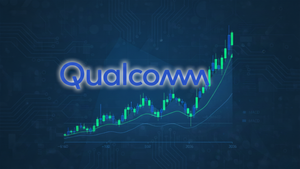Trump Tariffs in Focus: 2 Chinese Stocks to Own and 2 to Avoid

Donald Trump hasn't been shy about imposing tariffs when he returns to the White House in 2025. He has stated his intentions to levy 10% to 20% tariffs on imports and up to 60% to 100% tariffs on Chinese goods. Whether to take these statements literally or consider them negotiation tactics remains to be seen. The stock market isn’t taking any chances and is already pricing in the worst-case scenarios for Chinese stocks.
However, completely dismissing all Chinese businesses may be an overreaction, as some won't be impacted by additional tariffs. Here are two Chinese stocks that won't be affected, worth buying on the dips, and two Chinese stocks to avoid that will be impacted.
Alibaba: E-Commerce Stock to Avoid, Unless It Gets Too Cheap to Ignore
Investors in Chinese stocks have been on a rollercoaster ride as Chinese stocks surged on the new China stimulus hype and are now crumbling on Trump tariff fears. E-commerce giant Alibaba Group Holding Ltd. (NYSE: BABA) is a case in point. Its stock surged 38% from $85 to $117.82 on the hype driven by the China stimulus package in September, only to collapse to $83.13 on November 22, 2024, on a disappointing stimulus package ($1.4 trillion) and potential Trump tariffs.
How Much of Alibaba's Revenue Comes from the United States? At least 1%
Alibaba is known for its e-commerce and cloud computing businesses. Most of its e-commerce revenues come from China. However, its international revenue continues to grow annually. In 2024, Alibaba is expected to generate $60 billion in revenue from China and $14.1 billion internationally. In the first six months of 2024, Alibaba generated $29.34 billion in Chinese e-commerce revenue and $6.4 billion in international e-commerce revenue.
In Q3 2024, Alibaba generated total revenue of $33.7 billion. Chinese e-commerce revenue, primarily from Tmall and Taobao, totaled $13.5 billion, and international e-commerce revenue from the AliExpress and Trendyol platforms was $3.38 billion. The company doesn’t report totals by region. Alibaba.com is the B2B site that lumps it revenue in with the international segment.
An August 2023 Statistica survey indicated that 11% of AliExpress shoppers were from the United States. Assuming 11% of AliExpress’ Q3 revenue, or $371.8 million, came from the United States, that would amount to less than 1% of total quarterly revenue. This would result in a very minimal impact on Alibaba, but concerns of a 60% to 100% import tax can still keep the stock down. Additionally, there is no breakdown of how much U.S. revenues are generated through its B2B site. Sentiment often dictates price; therefore, consider avoiding it.
PDD Holdings: Temu.com Growth Makes This an Avoid
Chinese social e-commerce platform operator PDD Holdings Inc. (NASDAQ: PDD) saw that Pinduoduo was so successful that it launched an international version called Temu.com. Temu exploded in popularity in the United States thanks to unbelievably low prices, app gamification, social media influencers, and a marketing blitz.
According to ECDB, in 2023, Temu generated $6 billion in sales from the United States, which was 43% of its gross merchandise volume (GMV). It estimates that United States revenue will rise more than 50% in 2024. PDD generated $34.9 billion in total revenue in 2023. United States e-commerce sales accounted for 5.8% of total revenue. Temu has also gotten backlash about its app being a national security threat. The combination of tariffs and regulatory risk puts PDD Holdings on the avoid list.
JD.com: The Amazon.com of China Stays in Its Own Lane, The Chinese Market
So far, we’ve covered Chinese e-commerce businesses. JD.com Inc. (NASDAQ: JD) is the largest retailer in China, often referred to as Amazon.com Inc. (NASDAQ: AMZN) of China. JD.com primarily serves Chinese customers in China and internationally. They have warehouses in the United States to improve logistics when transporting items to Chinese customers in the United States.
JD.com's e-commerce businesses cater to Chinese customers, as they don't even have an official English version of their website. The prices are in yuan, and the descriptions are in Chinese. Alibaba has a larger international presence in this department. JD.com doesn’t indicate its revenue is split by region, so it’s best to assume they don’t generate any material e-commerce revenue from the United States. This is why its stock is behaving better than globalized Chinese e-commerce stocks. JD shares are trading up 20% year-to-date (YTD), PDD is down 31.6% YTD, and BABA is up 7.2% YTD. Due to a lack of meaningful US e-commerce revenue, JD.com shouldn’t be affected by Trump tariffs.
Li Auto: Selling Smart EREVs in China and Outside the United States
Chinese new energy vehicle maker Li Auto Inc. (NASDAQ: LI) is profitable and growing in China. The auto/tires/trucks sector company has found the right formula to address the major paint points of electric vehicles (EVs), range, and charging anxiety. Li Auto's extended range electric vehicles (EREV) also come outfitted with a motor that is used strictly to recharge the battery. This enables their EREVs, like its luxury L9, to drive up to 877 miles compared to 174 on battery alone. Drivers no longer have to worry about running out of power when driving an EV. The company just surpassed its one millionth vehicle delivery and continues to grow. Its first fully electric vehicle, the Mega, had a very lackluster reception, causing them to pause the launch of its second-ever EV until the latter half of 2025.
100% Tariffs Already Keep Li Auto Vehicles Out of the United States
Li Auto doesn't sell any of its vehicles in the United States due to the existing 100% tariffs on Chinese vehicles. The company doesn't plan on entering the United States markets but is making inroads into Europe. Any further Trump tariffs wouldn't impact Li Auto.
More News
View More




Recent Quotes
View More
Quotes delayed at least 20 minutes.
By accessing this page, you agree to the Privacy Policy and Terms Of Service.